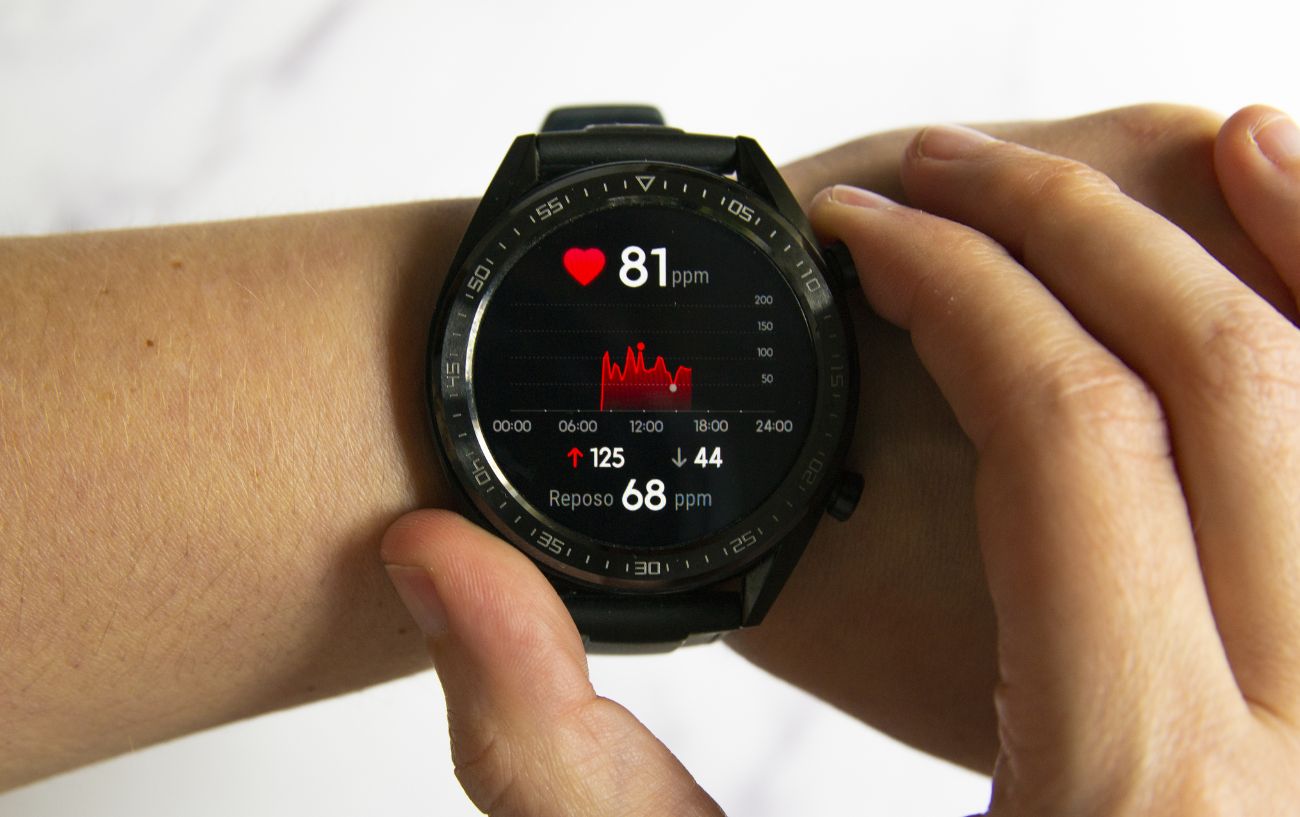Threshold training is one of the key running workouts to improve endurance performance. It is a type of training that consists of running long intervals at a “comfortable/uncomfortable pace,” between 85-90% of your maximum heart rate.
As a running coach and runner myself, I swear by this type of tough training session to improve speed, consistency with pace, and overall performance.
In this guide, we will discuss threshold training, the benefits of threshold training for runners, the differences between anaerobic and lactose thresholds, and I’ll even give you some of my best workouts to add to your training program.

What Is Threshold Training?
Threshold training is a particular type of endurance training workout that helps improve your lactate and anaerobic thresholds.
One of the most confusing aspects of threshold training for runners is that some sources reference anaerobic threshold, whereas others discuss lactate threshold.
For example, you might hear about lactate threshold runs or anaerobic threshold workouts.
So, are lactate threshold and anaerobic threshold the same thing? What are the differences between the anaerobic threshold vs lactate threshold?
What Is The Lactate Threshold?
Technically, the anaerobic threshold and lactate threshold are not the same things, but they occur around the same effort level and are characterized by similar physiological sensations.
Anaerobic threshold and lactate threshold1Hoff, J., Støren, Ø., Finstad, A., Wang, E., & Helgerud, J. (2016). Increased Blood Lactate Level Deteriorates Running Economy in World Class Endurance Athletes. Journal of Strength and Conditioning Research, 30(5), 1373–1378. https://doi.org/10.1519/jsc.0000000000001349 both refer to the point at which you will feel like your effort level has gotten significantly harder even though your running pace or speed has not increased significantly.

Essentially, after either the lactate threshold or the anaerobic threshold is crossed, you will see a significant spike in the fatigue you feel in your legs, the heaviness and burning sensation in your muscles, the rate of your breathing, and your perceived exertion.
The actual physiological metrics being evaluated with anaerobic vs. lactate threshold are technically different, but again, what you will feel in your body is the same.
This is because the lactate and anaerobic thresholds overlap in terms of the percentage of your VO2 max or your running speed at which the threshold is reached.
Anaerobic threshold is a measure of energy metabolism, or how your body produces ATP (energy) for your muscles to contract.
Thus, the anaerobic threshold occurs when the exercise intensity has crossed this “threshold,” such that you can no longer produce ATP (energy) through aerobic metabolism and must now rely more heavily on anaerobic energy production.
Up until the anaerobic threshold, you are able to run or perform endurance exercise in a “steady state,“ which means that your body can rely almost entirely on aerobic metabolism to produce energy.
This means that you are getting plenty of oxygen and should be able to continue running or exercising at the same pace or exertion level for an extended period without fatigue.
The anaerobic threshold corresponds to the lactate threshold because when your body relies on anaerobic glycolysis to produce energy, the end product is lactate along with a hydrogen atom, which is an acid.
Below the lactate threshold, your muscles are able to shuttle the lactate to the liver to be further broken down to pyruvate to create ATP.
At the lactate threshold, your body suddenly shifts from being able to clear the lactate and acidic metabolic waste products at the same rate they are being produced.
This means that the concentration of hydrogen ions, associated with the burning feeling and immense and sudden fatigue you feel beyond the anaerobic or lactate threshold, begins to build up.

Essentially, after the lactate threshold or an aerobic threshold has been crossed, your muscles are inundated with acidic waste, and the lactate concentration in your blood rises dramatically.
Although we used to think that the lactate, or “lactic acid,” caused this burning sensation and sudden fatigue, it has since been discovered that lactic acid does not exist as a biological molecule because it quickly dissociates from the lactate molecule.
Furthermore, it is not the lactate causing the discomfort but the hydrogen ions.
However, because it is not really possible to measure the concentration of hydrogen ions, exercise physiologists can take blood samples and measure the lactate concentration in the blood to serve as a biomarker of your lactate threshold and reliance on anaerobic metabolism.
Lactate concentration can be readily measured and corresponds with the acidic buildup.
Many athletes do not have access to continuous blood lactate testing while training, though endurance training methods such as the Norwegian Method of endurance training rely on blood lactate samples during lactate threshold training workouts.
Why Is Threshold Training Important for Distance Runners?
The lactate threshold and anaerobic threshold are not necessarily important metrics that you have to know or may even have access to measuring yourself, but it is important to have a grasp of the running pace or speed at which you hit these thresholds.
The entire purpose of threshold training for runners is to progressively boost their lactate and anaerobic thresholds so that they can run faster and longer before switching to anaerobic metabolism and crossing their threshold.
This is because runners and other endurance athletes have to stay at or just below the anaerobic threshold during long-duration races to maintain the same race pace and maximize their performance potential without crashing and burning.
Thus, for all intents and purposes, the anaerobic threshold2Ghosh, A. K. (2004). Anaerobic threshold: its concept and role in endurance sport. The Malaysian Journal of Medical Sciences : MJMS, 11(1), 24–36. https://www.ncbi.nlm.nih.gov/pmc/articles/PMC3438148/ is the limiting factor for endurance performance.
Therefore, by improving your anaerobic threshold, you can run faster, cycle faster, or swim faster in that “comfortably hard“ effort level without red-lining and rapidly exhausting yourself due to the high intensity of your workout or race.

How Do I Determine My Personal Threshold Pace For Running?
There are different approaches to threshold training for runners and other endurance athletes.
Most threshold workouts are performed at a pace at or slightly below your anaerobic threshold (AT) or lactate threshold (LT). This pace typically brings your heart rate to about 85-90% of your maximum heart rate.
If you are used to heart rate training zones with a heart rate monitor, you can gauge your pace there.
You can also calculate your pace using a running pace calculator such as the Jack Daniels VDOT. (This will detail all your paces, including marathon pace and your other training paces.)
This intensity is thought to be the “sweet spot” where you can improve the efficiency of the anaerobic system and help push the anaerobic threshold higher.
Essentially, threshold workouts improve endurance performance because they allow you to run, cycle, swim, or perform some other type of endurance exercise at a faster pace without accumulating fatigue.
Therefore, threshold training workouts are done at or just below the threshold.
What Are The Methods Of Threshold Training?
There are essentially two different types of threshold workouts for runners and endurance athletes:
- Continuous threshold workouts, such as tempo runs.
- Threshold training intervals, which involve running at your threshold pace for designated intervals of a specific distance or time and then taking relatively short recovery breaks
The benefit of tempo runs and continuous threshold workouts is that they build your tolerance for being “comfortably uncomfortable“ at the anaerobic threshold pace, strengthening your physical and mental ability to withstand this discomfort for a longer period of time.
However, there is a limit to how long you can perform tempo runs or longer threshold intervals because if you cross over the threshold, you will experience that rapid accumulation of fatigue and will need a break.
Some endurance training methods, such as the Norwegian Method for runners and endurance athletes, use a lactate threshold interval approach. In this approach, you perform high-quality intervals at your lactate threshold pace but then take recovery periods.
This helps you do more high-quality work in a single threshold workout session without quickly becoming exhausted or needing tons of recovery in the following days.
The rest periods in threshold interval workouts for runners allow the body time to buffer, clear some of the acidic buildup, and shuttle the lactate to the liver for conversion into pyruvate.
Thus, runners can run at a faster pace using lactate threshold intervals versus continuous tempo lactate threshold runs, maximizing speed, total time, and training volume within the lactate threshold zone without crossing over into the anaerobic zone and needing to end the workout early.

Continuous Threshold Workouts
Continuous threshold workouts are tempo runs. These runs are often 20 minutes in length at your threshold pace.
Here are a couple of workouts you can try out in your training plan, whether for 5K training, half marathon training, marathon training, or anything in between.
Classic Tempo Run
- Warm up with 10-15 minutes of easy running
- Run a 20-minute tempo run at your threshold pace
- Cool down easy for 10-15 minutes
Advanced Tempo Run
- Warm up with 10 minutes of easy running
- Run a 20-minute tempo run
- Run 10 minutes easy
- Run a 20-minute tempo run
- Cool down at an easy pace for 10 minutes
Threshold Interval Workouts
Examples3Bakken, M. (2022, January 7). https://www.mariusbakken.com/the-norwegian-model.html. Www.mariusbakken.com. https://www.mariusbakken.com/the-norwegian-model.html of threshold interval training workouts for runners include:
- 5 x 6:00 minutes at threshold pace with 60 seconds of recovery in between each
- 10 x 1,000 meters at threshold pace with 60 seconds of recovery in between each
- 5 x 2,000 meters at threshold pace with 60 seconds of rest between each
Add only one threshold session per week to your training plan. Beginning to run at this training intensity can be tough on the body, especially if you are used to running more zone 1 or zone 2 workouts. We want to avoid overtraining at all costs.
I like to schedule my speed workouts, such as threshold runs, with a recovery run, cross-training, or active recovery on either side to allow enough time for my body to recuperate for the next hard session.
After consistently incorporating threshold sessions into your running, you’ll see great improvement as your body makes the necessary adaptations.
Let’s shave down those race times and time trials with some threshold work!
There are many types of endurance training workouts in addition to threshold training, each serving a particular physiological purpose to help improve your fitness level and performance.
To check out the different types of running workouts you can add to your training, read our next guide:












